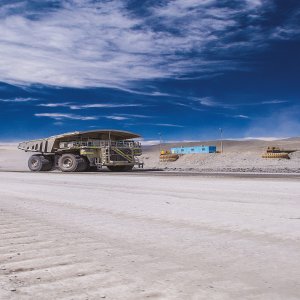China, the Golden Market for Metal Exportation

STORY INLINE POST
Q: How advanced are Mexico’s practices when it comes to commercialization and where does Mercuria fit in?
A: In terms of commercialization, Mexico has good practices. The market has become more open and has incorporated international standards. Previously, the market was quite closed and mostly overseen by the large Mexican operators that internally commercialized their products. But as there are more companies in the industry, new opportunities for traders have opened up. There used to be little space for traders. Some companies may want to save money by trading their products themselves but they have to realize that we do much more than buy and sell material. We also provide solutions and offer expertise in terms of logistics and even taxes. The return of tax money is a big issue in Mexico that can take several years. Our company offers to take over these matters in the supply chain. It is also not so easy to find smelting companies willing to purchase material as each one is looking for very specific requirements and characteristics.
Q: How is Chinese consumption influencing the metals trading market?
A: China continues to grow technologically and its internal demand is likely to keep rising and surpass global supply of these metals. We believe that the exportation business in China will continue to be favorable. Demand for vehicles, both traditional and electric, will continue to require lead and other battery metals such as zinc and nickel. Construction in China paused for a while but it is starting to pick up pace again, which will impact the mining industry as well.
When it comes to precious metals, China’s stock exchange in Shanghai calculates its own prices for precious metals. This used to create a considerable discrepancy between the prices in China and the rest of the world. But the variation has lowered a great deal, and now it has somewhat leveled out. There will always be a difference but it is much more minimal. China is an important region for traders and represents more than 80 percent of exportation destinations for metals. Overall, Asia represents a significant amount of the world’s trade, followed by Europe.
Q: How do you expect copper prices to perform in the medium term?
A: Copper will continue to rise but to no more than US$7,500/t. Eventually supply and demand will make prices fall back to a more stable position around US$6,500/t taking into consideration the history of the metal. The prices will motivate many companies to start evaluating more projects in copper. The amount of nonferrous concentrates Mexico exports is around 1.6 million tons from ports such as Manzanillo in the Pacific Ocean for products moving toward the Asian market. There is some movement of copper toward the US but it does not compare to the level of concentrates that are exported to China.
Q: What factors are behind the rise and fall of zinc prices?
A: Supply was greatly affected by the closure of zinc mines globally. Demand rose after stocks dropped, bringing zinc to US$3,800/t as there was a great deal of speculation regarding EVs and batteries. Some analysts have even predicted a price of US$4000/t but this is too optimistic.
Prices will probably be further impacted as new mines come online in the next couple of years. We believe prices could drop to around US$2,500/t. It may seem like a steep drop but considering that this metal is normally around US$2,300/t, it should level out at an optimal price.
























